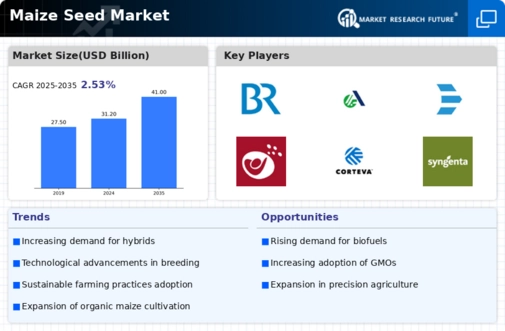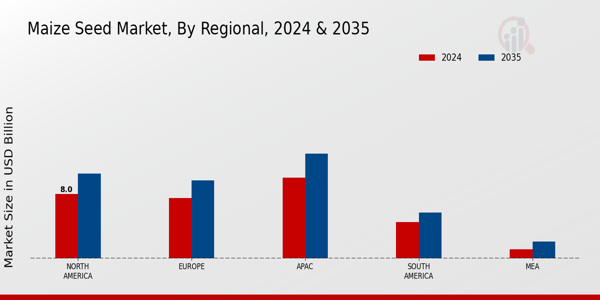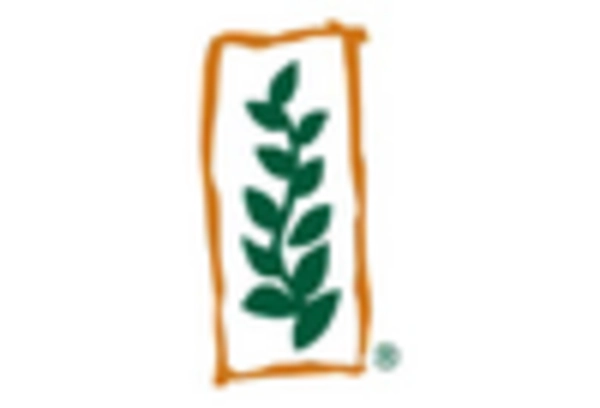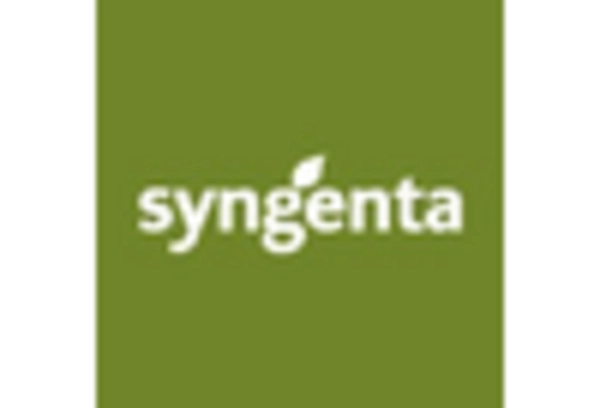The Global Maize Seed Market is characterized by a dynamic landscape where innovation, research, and competitive strategies play pivotal roles. The market is influenced by various factors, including technological advancements, environmental considerations, and growing population demands that require efficient crop yield methodologies.
As maize is one of the most crucial staple crops worldwide, competition among seed manufacturers is intensifying. Companies are increasingly focusing on developing hybrid seeds with enhanced traits such as drought resistance, pest resistance, and improved nutritional profiles, reflecting the urgent need for sustainable agricultural practices.
Moreover, the market is marked by key players investing in extensive research and development to create genetically modified seeds that promise higher productivity and adaptability in diverse climatic conditions. Assessing competitive positioning within this space reveals a mixture of traditional players and emerging biotech firms driving the overall growth trajectory of the market.
Bayer stands as a formidable entity within the Global Maize Seed Market, showcasing an extensive portfolio that addresses a range of agricultural challenges. The company has established a robust market presence through its commitment to innovation and sustainability, underpinned by significant investments in research and development.
Bayer's strength lies in its ability to combine cutting-edge biotechnology with traditional agricultural practices, offering seeds that excel in yield performance, disease resistance, and agronomic advantages. Furthermore, Bayer leverages its global footprint and established distribution networks to reach various markets effectively, nurturing strong relationships with farmers to provide comprehensive solutions that enhance productivity.
By focusing on traits that optimize crop performance under varying conditions, Bayer has solidified its reputation as a leader in the maize seed sector, setting high standards for quality and reliability.
Southeast Asia Seed plays a significant role in the Global Maize Seed Market, particularly in catering to the unique agricultural needs of the Southeast Asian region. The company's competitive edge is highlighted by its focus on developing locally adapted maize varieties that thrive in the region's diverse climatic conditions.
Southeast Asia Seed has built a strong market presence characterized by its understanding of local farming practices, which allows it to provide tailored seed solutions that resonate with farmers. The company's strength lies in its commitment to research and development, emphasizing hybrid seeds with enhanced traits suitable for tropical climates.
This adaptability not only contributes to increased yield potential but also makes its products particularly appealing to the growing farming community in Southeast Asia. Through strategic partnerships and collaborations, Southeast Asia Seed continues to expand its influence, reinforcing its position in the competitive landscape of the maize seed market.



 $IMAGE3_HERE
$IMAGE3_HERE













Leave a Comment